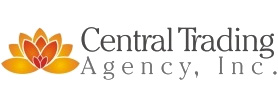Manufacturing companies are looking at ways to optimize their bottom line by, among other strategies, cutting costs and optimizing operations. If manufacturers look at where their greatest investments are made, it becomes obvious that an optimized Procurement process can be of benefit to their bottom line. Why?
Manufacturing companies are looking at ways to optimize their bottom line by, among other strategies, cutting costs and optimizing operations. If manufacturers look at where their greatest investments are made, it becomes obvious that an optimized Procurement process can be of benefit to their bottom line. Why?
Manufacturing companies’ largest cost is in inventories – raw materials, subassemblies, finished products, MRO and consumables. An optimized Procurement process can help in two ways:
- It can optimize the cost of goods, generating a substantial impact on total profitability. With between 30% and 70% of the total budget of manufacturing firms going into cost of goods, even a small percentage of savings in this area can yield tremendous results.
- It can minimize inventory levels, resulting in lower investment in inventory carrying costs, better usage of floor space and higher production efficiency.
In summary, an optimized Procurement process affects the entire production cycle.
How should manufacturing companies go about improving their Procurement? Here is a list of basic best practices.
Procurement Best Practices in the Manufacturing Industry
Consolidation of Supplier Base
Consolidating the supplier base decreases the administrative burden of managing payments and purchases to and from the suppliers, thus reducing the company’s costs. In consideration of the above, it is best to choose a supplier that has deep sourcing ability.
Cost Reduction – Goods and Overhead Costs
Manufacturing can reduce costs by working with distributors or agents not tied down to any one supplier and who can thus identify and obtain the shortest lead time and the most competitive pricing among various sources.
Strategic alliances are crucial here – obtaining a reduction in the cost of goods through volume purchasing or the reduction of overhead costs by outsourcing the Procurement process can significantly affect the bottom line.
Strong Relationships with Key Suppliers and Partners
Developing strong relationships with key suppliers and building trust help to ensure consistent supply and quality of goods. These are crucial factors in ensuring that the Procurement process operates smoothly.
All collaborators and suppliers need to be selected carefully, and relationships cultivated with care, to reduce risk and ensure an optimal Procurement process and cost profile.
Quality Materials
Procuring quality materials specified by the manufacturing process will drive improved product manufacturing, as high quality materials are less likely to stop the production lines or produce poor quality product. This results in less re-work and scrap, and fewer returns and claims, enhancing profitability. For instance, in April 2013, Toyota, Mazda, Nissan and Honda were forced to collectively recall 3.5 million vehicles globally, due to a faulty airbag. Such large scale problems are bound to be avoided by making sure that materials are acquired from trusted suppliers and partners.
Timely Deliveries
Timely deliveries are a basic requirement for any good Procurement process. Just-in-time deliveries enable companies to optimize inventory levels, thus reducing costs, while expedited deliveries in emergency situations help manufacturers reduce or completely avoid downtime. Teaming up with trustworthy suppliers and partners who can guarantee that companies will receive the necessary parts or supplies on time will ensure a stable and undisturbed production process, helping the entire business.
Minimization of Inventory Levels
Minimizing inventory levels lowers inventory carrying costs and improves cash flow.
It also enables a more efficient production and an optimal utilization of floor space. An additional outcome of minimized inventory levels is a reduction in damaged inventories. The longer a raw material or sub-assembly is sitting on the shop floor, the more likely it is to become damaged, obsolete or past expiration date.
An optimized Procurement process can assist general operations in optimizing inventory levels by implementing just-in-time, flexible and expedited deliveries, resulting in lower inventories on hand.
Optimizing Procurement is crucial for manufacturing companies. Bottlenecks in deliverables create risk of losing market share to those manufacturers who have the most efficient Procurement operations.
How to Optimize Procurement?
Manufacturing companies looking to optimize their Procurement process can either look to implement best practices internally, or outsource with a trusted partner . As internal optimization can be complex and time-consuming, Procurement outsourcing has become an essential strategy for companies to remain competitive in the Manufacturing industry.
Unfortunately, outsourcing has often been associated with only using overseas firms. At CTA, we are riding a new trend of bringing some of those services back to the US by making our service price competitive with overseas firms, while providing the additional benefits of better communication and understanding of the domestic market.
CTA’s Procurement service offers a highly skilled and dedicated team to perform Procurement functions quickly and inexpensively, and with the flexibility needed to meet the changing needs of any Procurement department.
Find out how CTA can help you optimize your Procurement process by contacting us or by submitting your RFQ.


